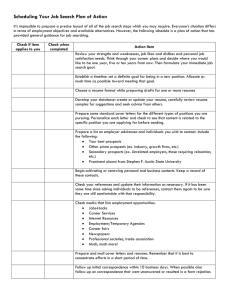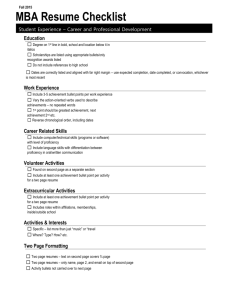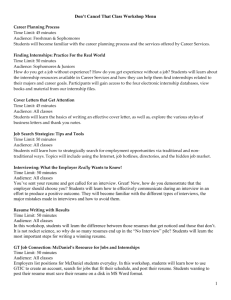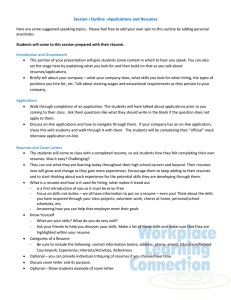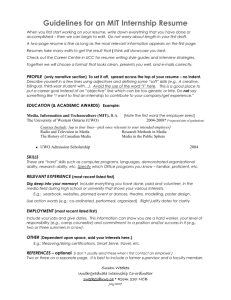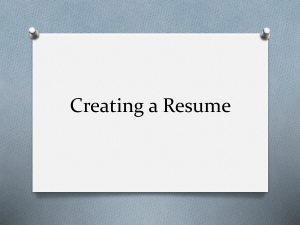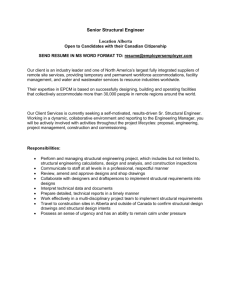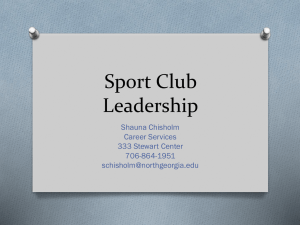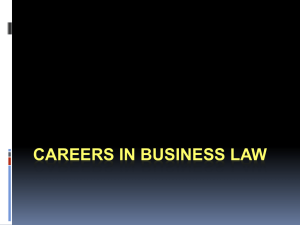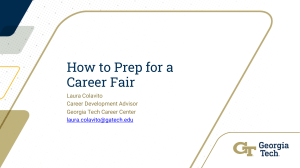Tips for Writing Effective One
advertisement
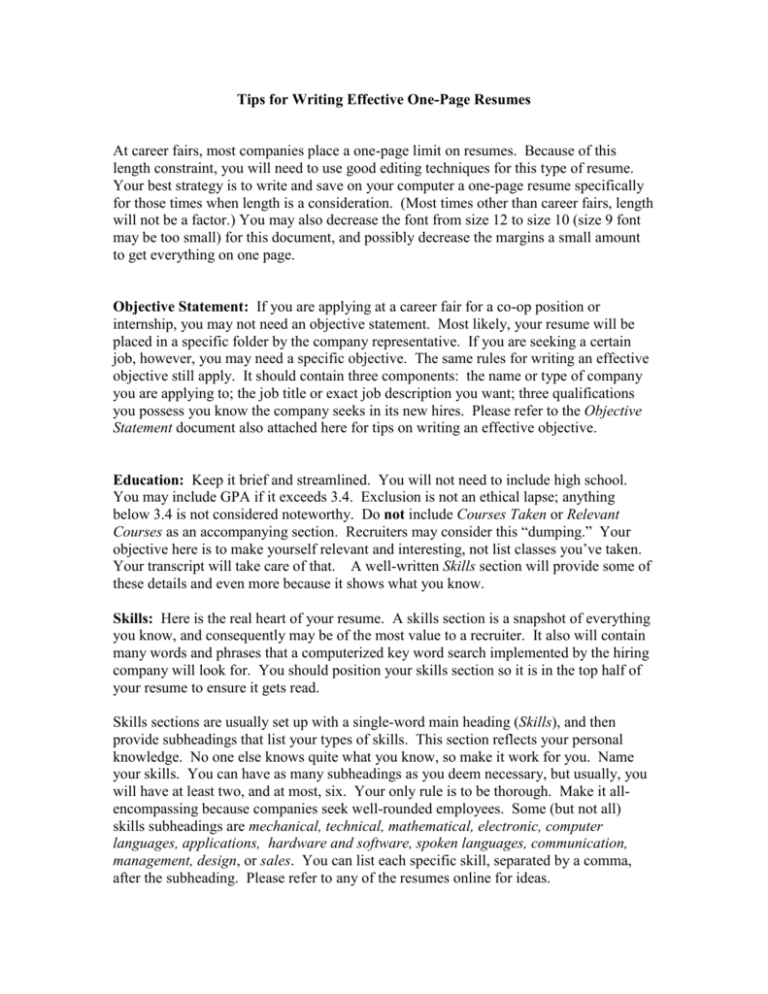
Tips for Writing Effective One-Page Resumes At career fairs, most companies place a one-page limit on resumes. Because of this length constraint, you will need to use good editing techniques for this type of resume. Your best strategy is to write and save on your computer a one-page resume specifically for those times when length is a consideration. (Most times other than career fairs, length will not be a factor.) You may also decrease the font from size 12 to size 10 (size 9 font may be too small) for this document, and possibly decrease the margins a small amount to get everything on one page. Objective Statement: If you are applying at a career fair for a co-op position or internship, you may not need an objective statement. Most likely, your resume will be placed in a specific folder by the company representative. If you are seeking a certain job, however, you may need a specific objective. The same rules for writing an effective objective still apply. It should contain three components: the name or type of company you are applying to; the job title or exact job description you want; three qualifications you possess you know the company seeks in its new hires. Please refer to the Objective Statement document also attached here for tips on writing an effective objective. Education: Keep it brief and streamlined. You will not need to include high school. You may include GPA if it exceeds 3.4. Exclusion is not an ethical lapse; anything below 3.4 is not considered noteworthy. Do not include Courses Taken or Relevant Courses as an accompanying section. Recruiters may consider this “dumping.” Your objective here is to make yourself relevant and interesting, not list classes you’ve taken. Your transcript will take care of that. A well-written Skills section will provide some of these details and even more because it shows what you know. Skills: Here is the real heart of your resume. A skills section is a snapshot of everything you know, and consequently may be of the most value to a recruiter. It also will contain many words and phrases that a computerized key word search implemented by the hiring company will look for. You should position your skills section so it is in the top half of your resume to ensure it gets read. Skills sections are usually set up with a single-word main heading (Skills), and then provide subheadings that list your types of skills. This section reflects your personal knowledge. No one else knows quite what you know, so make it work for you. Name your skills. You can have as many subheadings as you deem necessary, but usually, you will have at least two, and at most, six. Your only rule is to be thorough. Make it allencompassing because companies seek well-rounded employees. Some (but not all) skills subheadings are mechanical, technical, mathematical, electronic, computer languages, applications, hardware and software, spoken languages, communication, management, design, or sales. You can list each specific skill, separated by a comma, after the subheading. Please refer to any of the resumes online for ideas. Experience: You have one simple rule here: Include as many jobs as length permits. Remember, often times, employers seek out new-hires who have a wide experience background. If you mowed lawns or worked in a bakery, list those jobs. They also make a statement about you, even if you are seeking a position in fabrication or network security. List your experiences, beginning with the most recent. Include dates worked, job title, and a verb-driven bulleted list that includes your duties. Note: co-op internship positions, paid tutoring and teaching assistantships also count as experience, so should be listed the same as a regular job. They can be listed here. What if you don’t have any real-world experience? You might think about using a heading such as Projects. Here, you can include the specifics of senior design and group or class projects. Create an entry for each project that resembles job entries. Activities / Honors: If you have room remaining, you can use this as a section to further define your qualities. It’s a multi-purpose section that can include everything from the dean’s list, to lacrosse team. Use bullets and make this section a simple listing. --Michael Laughter, UPCP
